Yorgos Lanthimos needed to relieve stress while filming “Poor Things” on soundstages in Budapest and “Kinds of Kindness” on location around New Orleans.
So the Oscar-nominated auteur of such unnerving, challenging movies as “Dogtooth,” “The Lobster” and “The Favourite” took up art photography.
“Something clicked in me while making ‘Poor Things’: I went ‘OK, why don’t I just enjoy this?’ ” the filmmaker told The Times at the opening of his first gallery exhibition, “Yorgos Lanthimos: Photographs,” at Webber 939 gallery in L.A.’s Arts District. The show will be there through May 18.
Filmmaker Yorgos Lanthimos, pictured at opening night of an exhibition of his art photography at Webber 939 gallery in Los Angeles.
(Adali Schnell / Mack)
That impulse translated into nights developing stock in a makeshift darkroom Lanthimos rigged in his Budapest apartment’s bathroom. Emma Stone, who would go on to win an Oscar for her performance in “Poor Things,” often joined him after extended workdays at Origo Studios.
“We learned how to process both black-and-white and color,” Lanthimos explains. “It became like our meditation, our relaxation.”
A capacity crowd of art fans and industry folks gathered last weekend to check out the entirely photochemical-made prints — not a single digitized step was involved — lining the gallery’s white and red brick walls. Predominantly monochrome photos taken during the “Kindness” production feature Stone, co-star Jesse Plemons and sometimes random Louisianans posing, often, with their faces obscured or turned away from the lens. These works are featured in the book “I Shall Sing These Songs Beautifully.”
A three-sided black box in the back of the gallery showcases rich color tableaux and classic black-and-white portraits from “Poor Things,” the latter taken the old-fashioned way with insertable plates of Ilford HP5 film in a wood-and-carbon-fiber Chamonix 4×5 camera. Collected in another art book, “Dear God, the Parthenon Is Still Broken,” the photos depict co-star Margaret Qualley with paint smears on her face, Stone as Bella Baxter in Victorian period garb on the hood of a production vehicle beside a coffee cup and foam food container, and the radiantly hued seascape on a volume stage with a dormant fog machine in front of it.
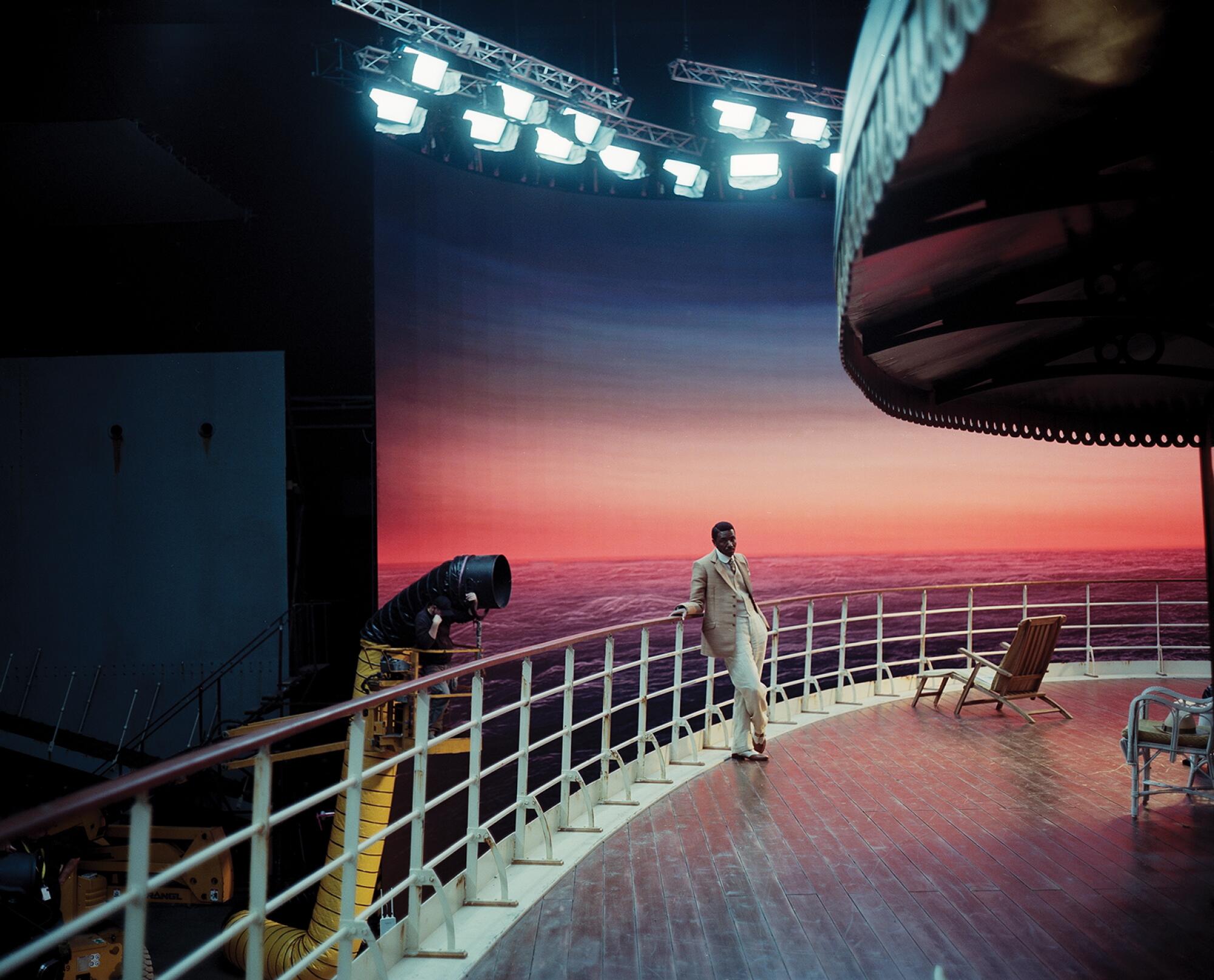
From the show “Yorgos Lanthimos: Photographs” at Webber 939 gallery in Los Angeles.
(Yorgos Lanthimos / Webber 939)
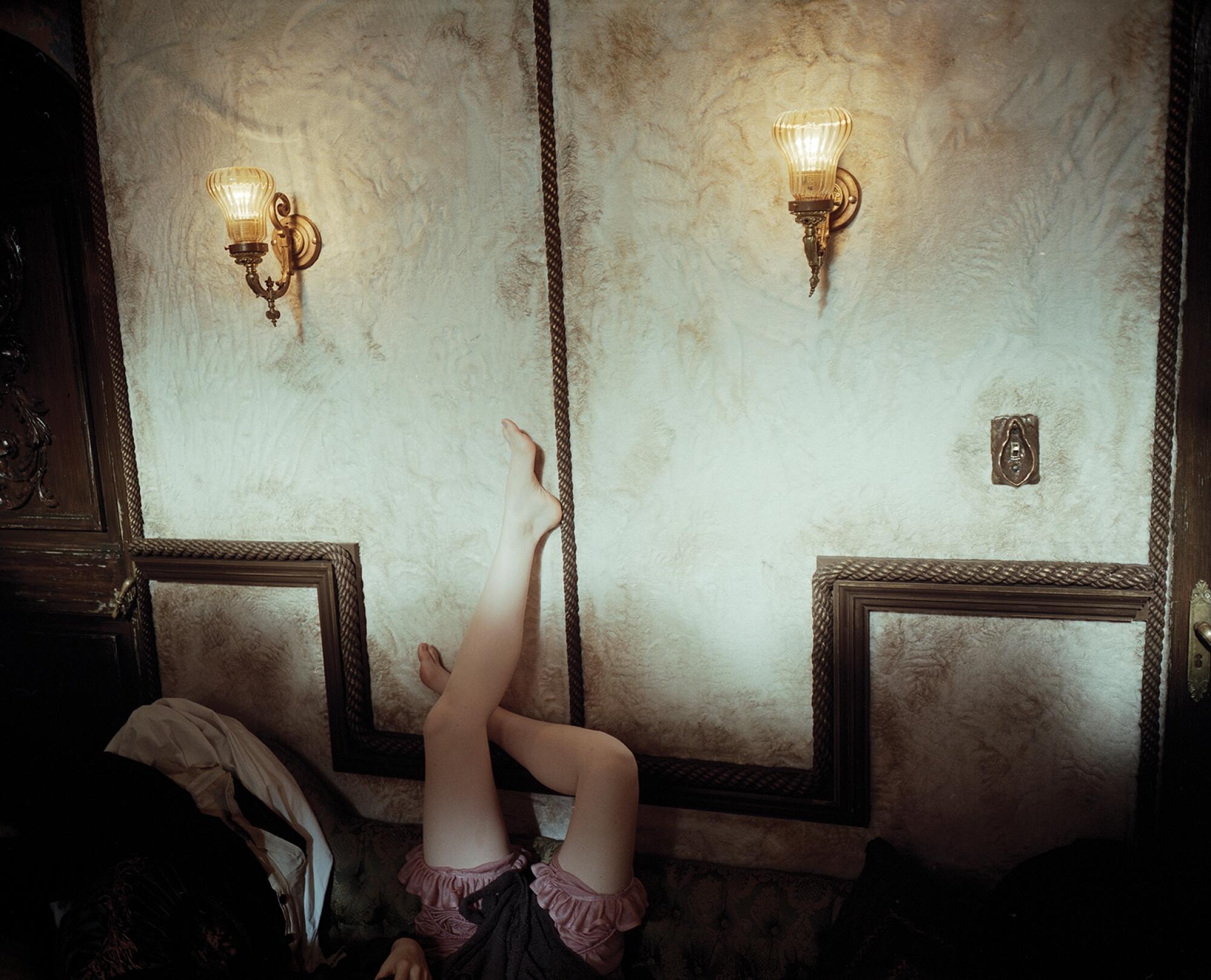
The Webber 939 show includes images the filmmaker made while shooting “Poor Things.”
(Yorgos Lanthimos / Webber 939)
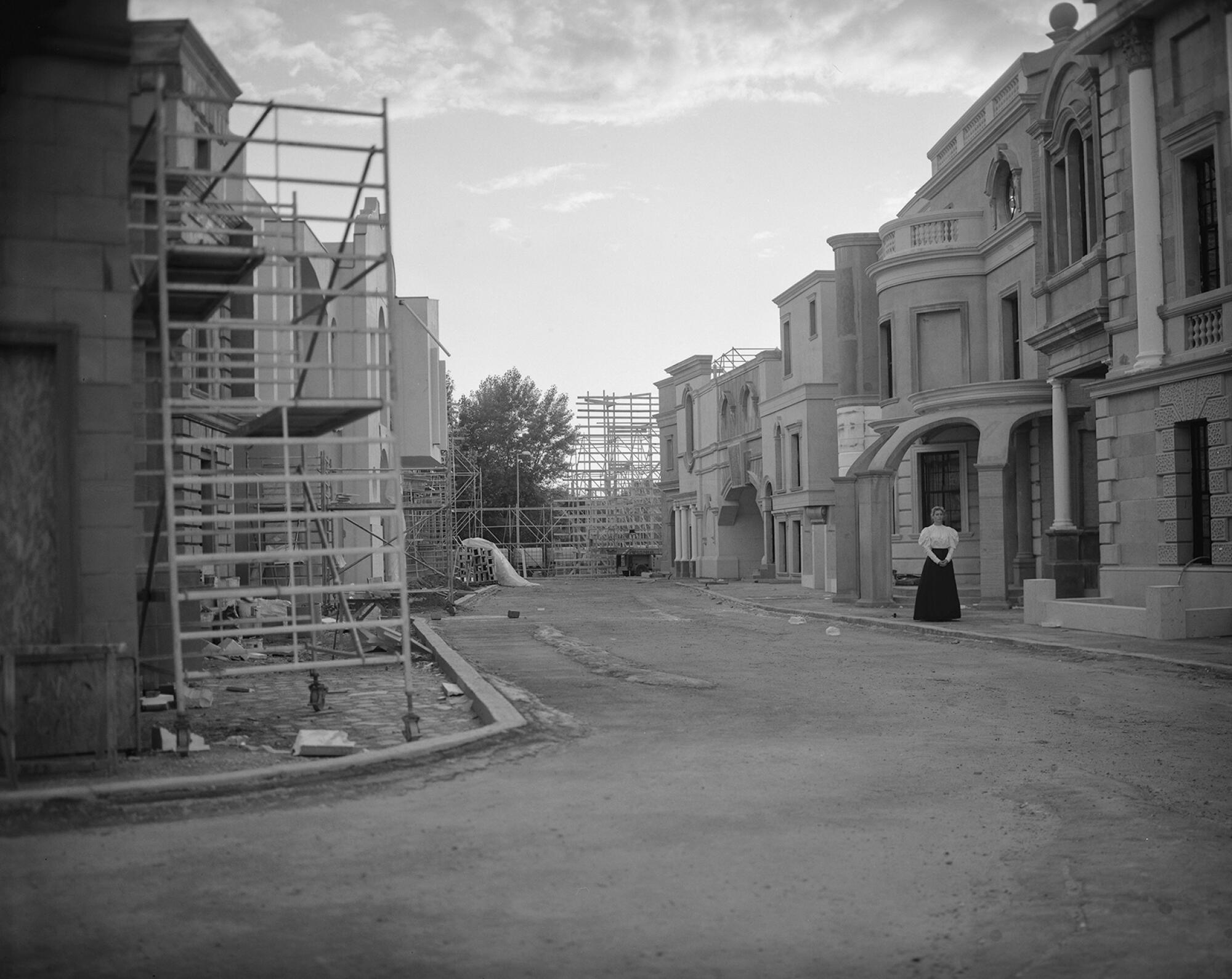
From “Yorgos Lanthimos: Photographs” at Webber 939.
(Yorgos Lanthimos/Webber 939)
The rubble of the struck set for the Baxter home in that movie, a fully laid-out, purpose-built filming environment, is particularly heartrending: through Lanthimos’ still lens, it looks like it was hit by a tornado. Such images may infer that the director is deconstructing his work in one medium with another, but there was nothing so intentional on his mind.
“It was, ‘Why don’t I see if, with my photography, I can find something here which is a different perspective from what is happening in the film?’ ” says Lanthimos, who learned basic photography skills at film school in his native Athens, and snapped publicity shots for his early Greek features when there was no money for set photographers.
“I also had this privilege of being able to go wherever I want, in corners that nobody would ever be while they’re watching the film,” he adds. “Everything was a built set on ‘Poor Things.’ I was able to go behind and on top of it, see the construction and demolition, which were quite interesting for me to photograph both visually and emotionally. Having built whole houses to film in and then seeing them demolished, it’s quite brutal.”
The photographer took a different tack during the “Kindness” shoot, turning his Mamiya 7 or Pentax 6×7 away from the production’s real locations to capture life — or a dejected semblance of it — beyond the movie’s mise-en-scene.
In one large, redolent print, a woman in a white coat stands beside a deserted stretch of road, gazing beyond a patch of grass while the shadow of a utility pole bisects her body from head to heels.
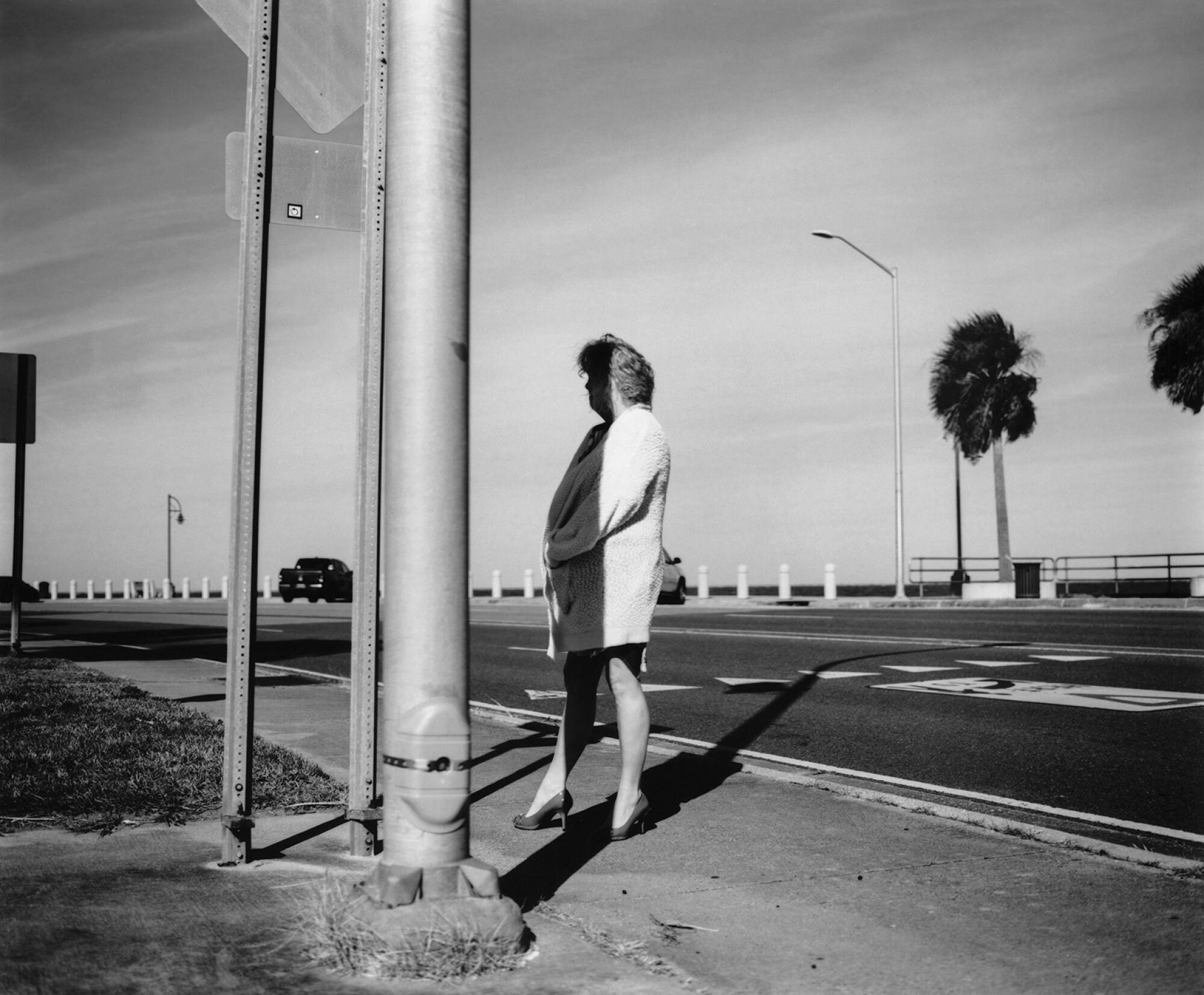
Lanthimos’ imagery “does what all great still photography does, which is suggest a narrative way beyond the frame and the subject,” says Michael Mack, who published the filmmaker’s pictures in book form.
(Yorgos Lanthimos / Mack)
“That image does what all great still photography does, which is suggest a narrative way beyond the frame and the subject,” observes Michael Mack, whose eponymous London publishing company made the “Song” book. (“Parthenon” is from Greek publisher Void.) “It has this drive that makes you question precisely what it is, what’s happened, why is she there? You elaborate, manifest all these possibilities — it’s close to his filmmaking in that sense. You have these ideas welling up, whether you like them or not.”
As do such films as “The Lobster,” Lanthimos’ New Orleans images defy what you’d expect to see from the project. He’s not about to articulate what we’re supposed to make of them, either.
“I can’t really, because it’s mostly an exploration,” he says. “How can you see this world in a different way? What else is there to reveal?
“I just enjoyed experimenting,” he elaborates. “Filming a scene at night and then looking up and seeing a tree, imagining what it would look like if I flashed the tree and revealed all the details which I couldn’t see with my eye.”
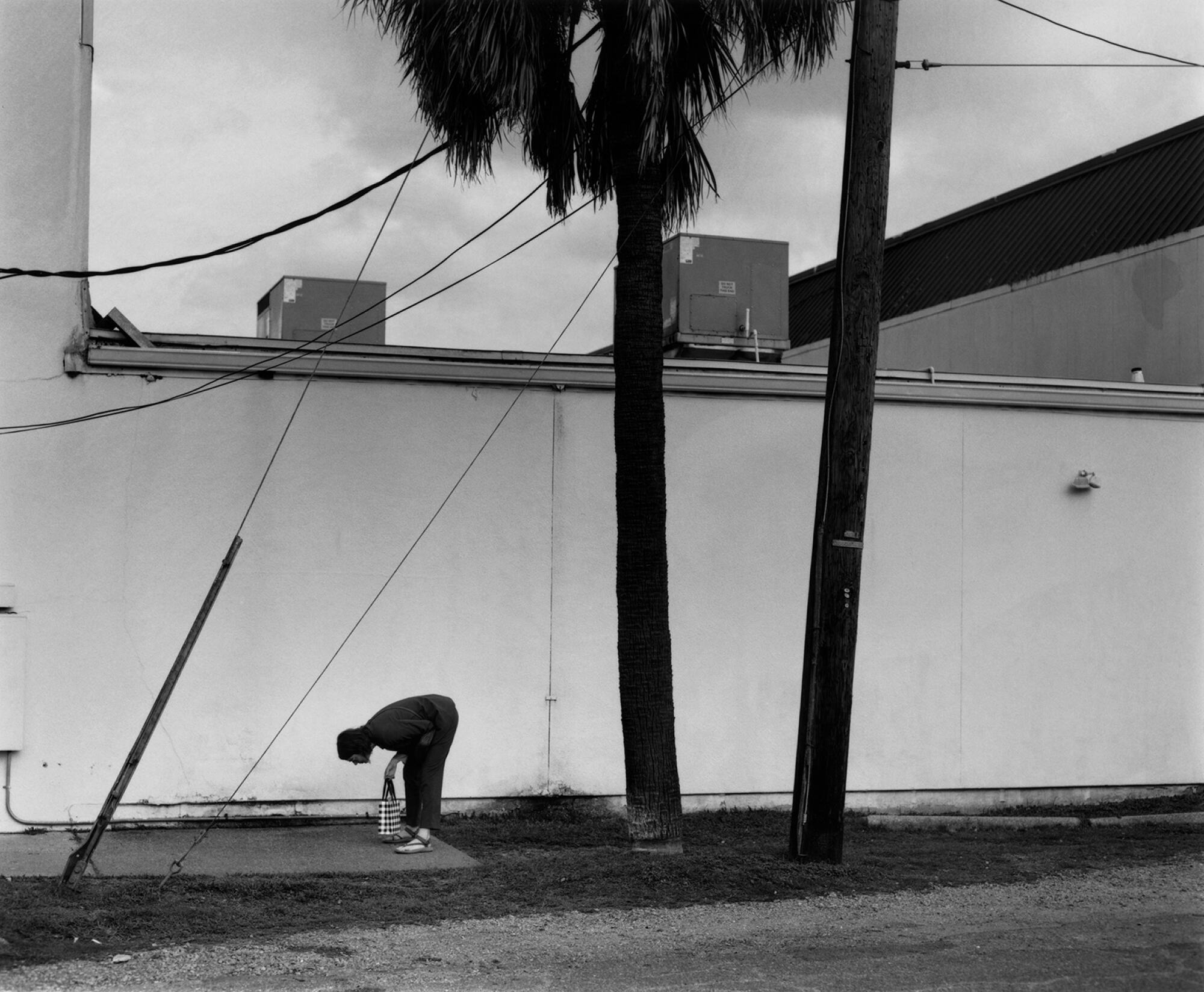
“Yorgos Lanthimos: Photographs” includes pictures taken away from the filmmaker’s sets.
(Yorgos Lanthimos / Webber 939)
Lanthimos also took out his camera while filming the upcoming “Bugonia,” also starring Stone and Plemons. He doesn’t know if if they will be part of another book or exhibition, but is certain that his new creative outlet is here to stay.
“You have a freer association,” Lanthimos says of this camera work. “For some reason, we’re more lenient with photography being less narrative, which is something that I love.”
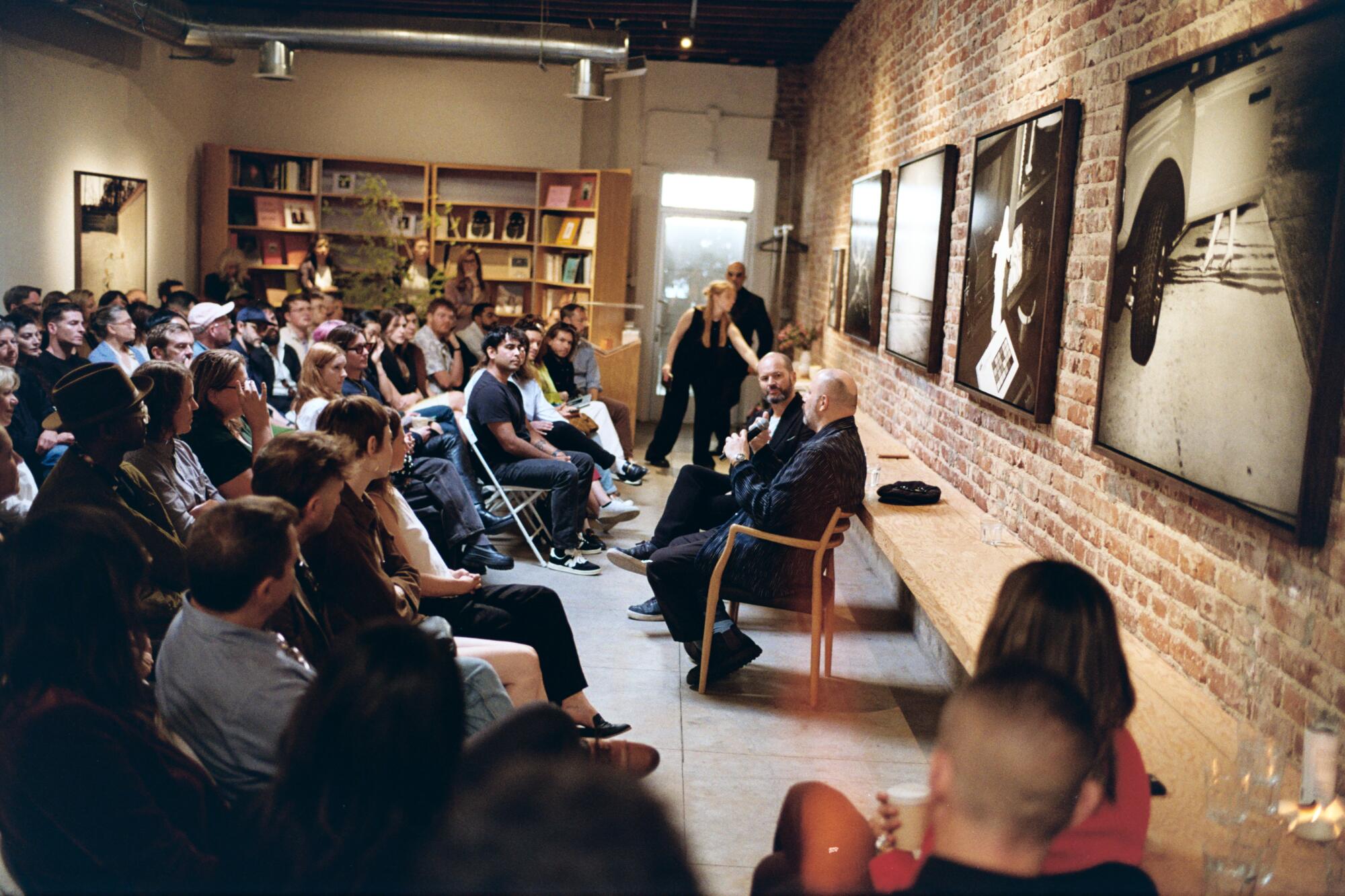
A packed crowd listens to Yorgos Lanthimos in a Q&A on opening night of his first L.A. gallery show.
(Adali Schnell / Mack)
Content shared from www.latimes.com.

